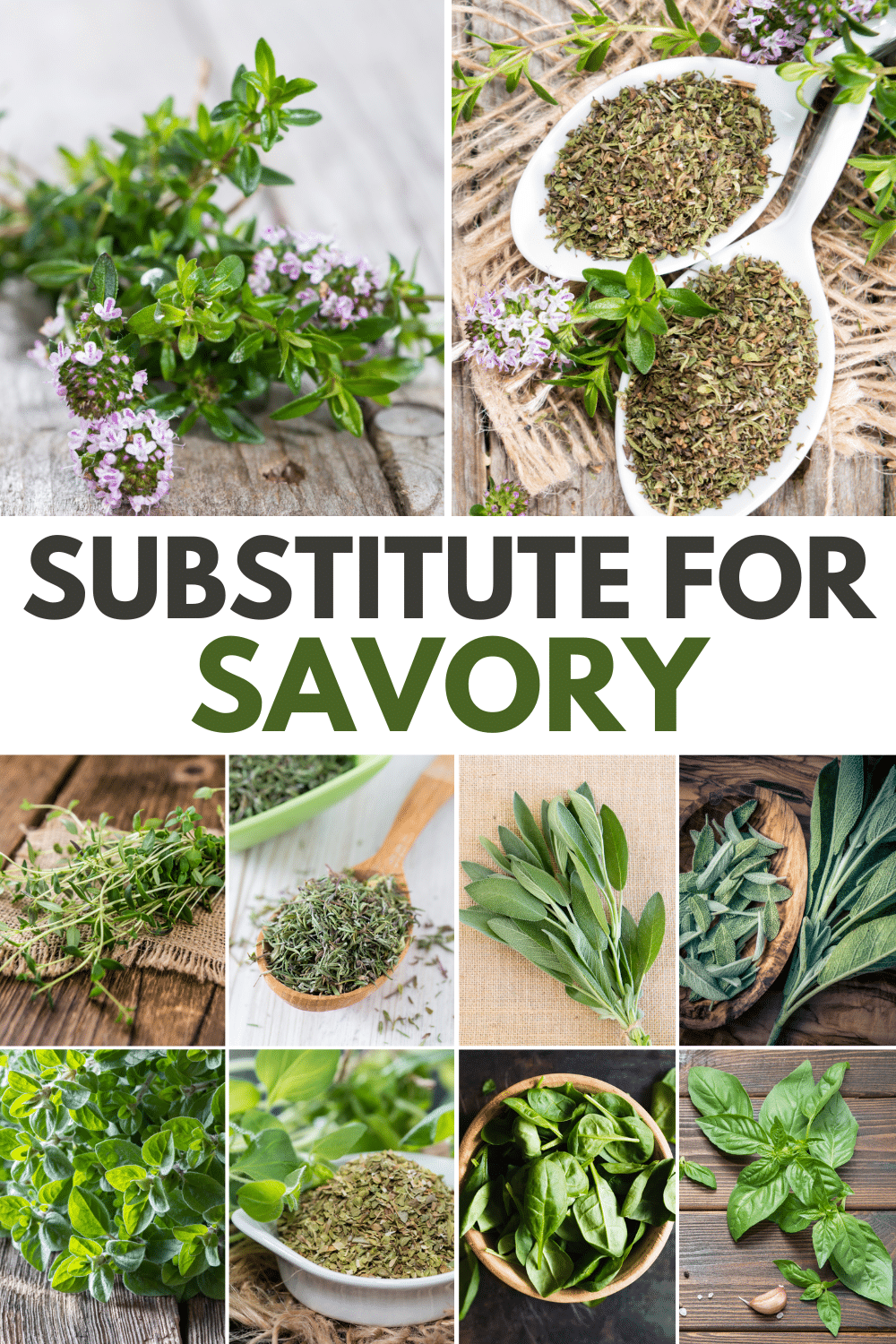Savory isn’t the most common herb sold in grocery stores, so this is your chance to discover a good substitute for savory herbs in your recipe.
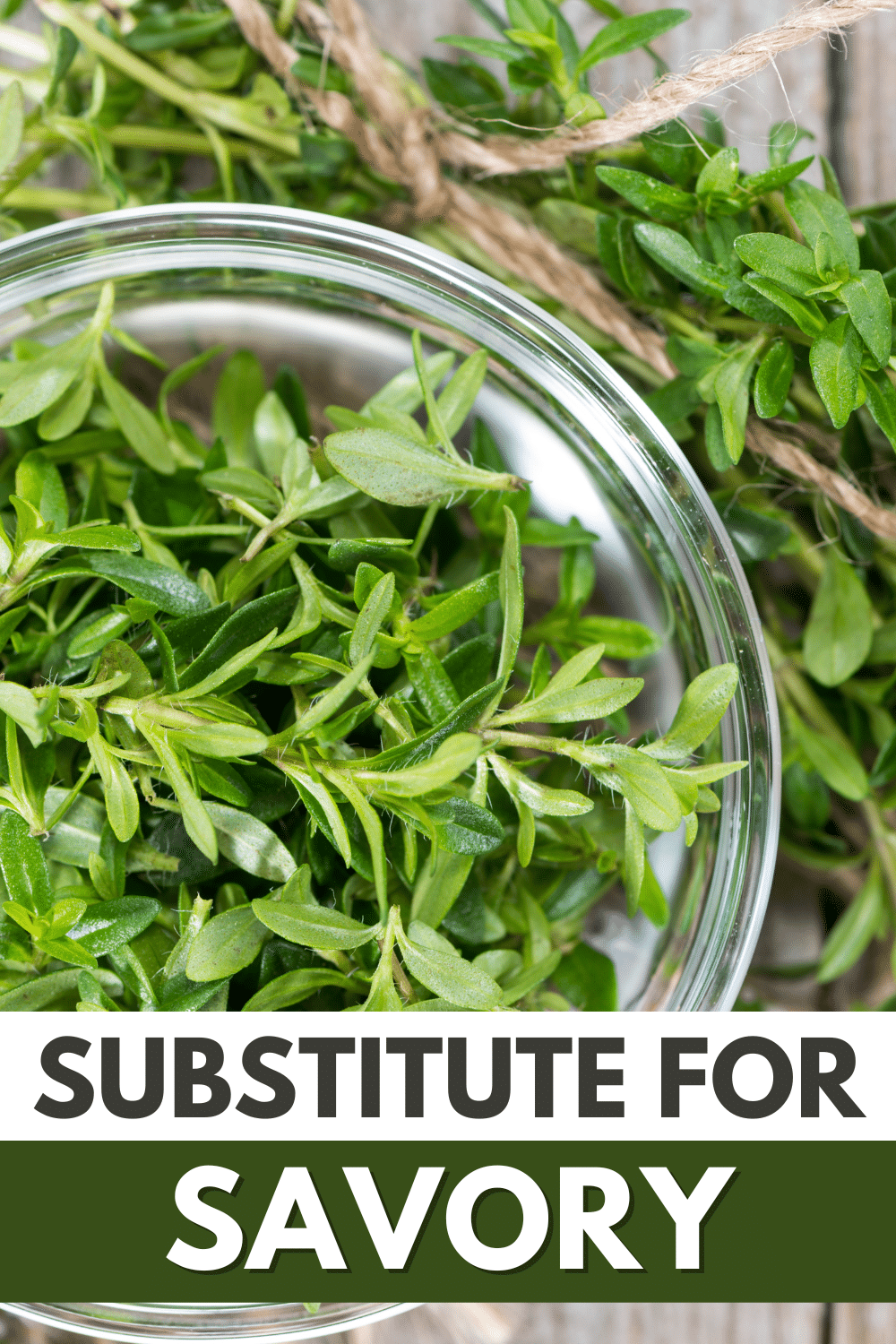
Savory is one of the herbs that deserve more attention from moms and home cooks. It’s versatile and can be used in a wide array of recipes. More importantly, the bold flavor and aroma of savory will undoubtedly elevate your dish.
It’s always a great idea to stock dried savory herbs, but what to do if you suddenly find them unavailable in your spice and herb cabinet? Find the best savory substitute, of course! Read on to find an alternative herb that will go perfectly well with your recipe.
Jump to:
Winter Savory and Summer Savory: What’s the Difference?
Savory is an herb that’s part of the mint family, making it a relative of other well-known herbs like basil, rosemary, oregano, and sage.
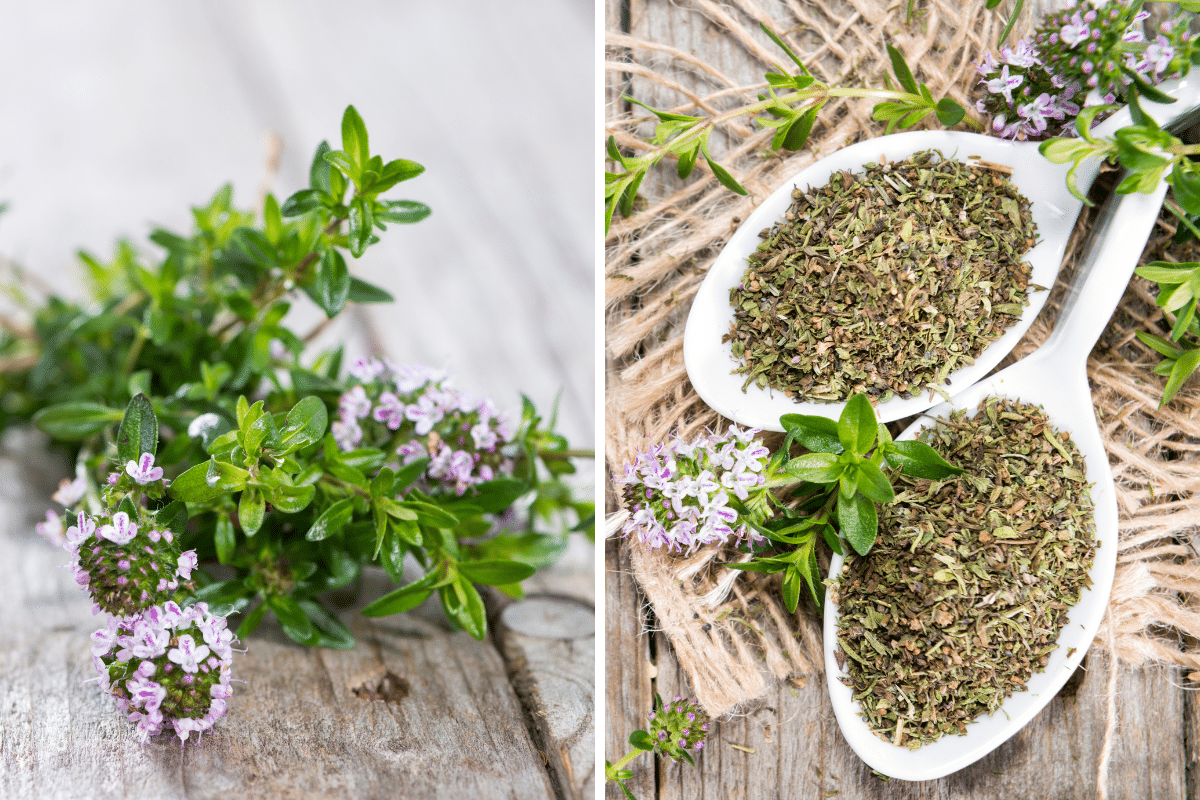
It may not be the most commonly used seasoning nowadays, but savory was a very popular Mediterranean herb in ancient Rome. Even back then, savory had several uses and was a common ingredient used to season beans, lamb, and other dishes. In older cultures, savory was also commonly added to love potions due to its aphrodisiac properties.
There are over 40 recognized species of savory (Satureja) plants, but the most well-known types of savory in cooking are summer and winter savory. Between the two, summer savory is more often included in recipes.
In general, both savory herbs have a bold flavor profile with similar notes as marjoram and thyme. You can get a bit of mint flavor from them, too. That said, they also have distinct flavor characteristics.
Summer savory has a more distinct peppery note and is more robust in taste and aroma. Winter savory has a milder flavor than summer savory, with recognizable earthy flavor notes that remind you of sage.
Best Substitutes for Savory
Thyme
This is the best savory substitute I’ve tried because thyme has the closest flavor to savory herbs. Although it doesn’t pack the same peppery notes as summer savory, thyme provides a dish with earthy and woody notes. This herb also has a touch of pungent and minty flavors.
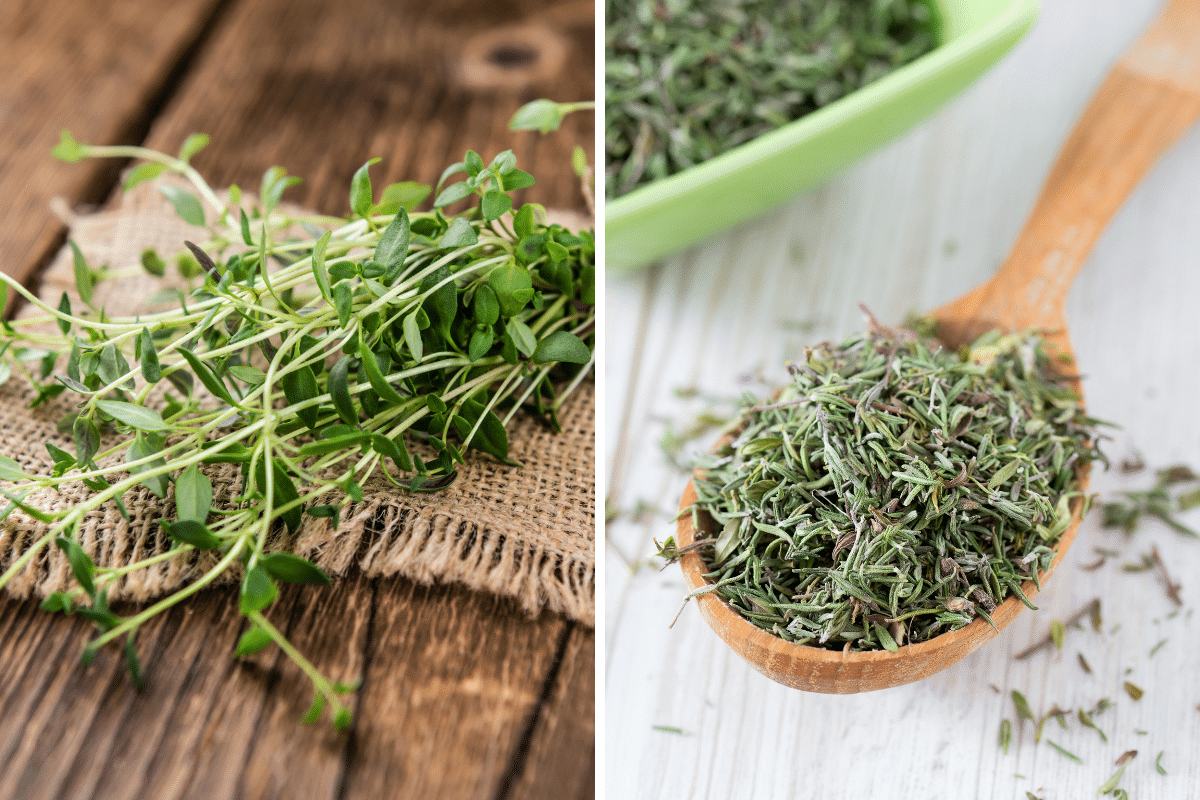
Like savory, fresh thyme has sturdy leaves, so you can add it in the earlier cooking stage to allow its flavor to develop. But keep in mind that dried thyme has a richer taste and aroma.
Since it’s similar to savory in many ways, you can easily use thyme to replace savory in a 1:1 ratio. It goes well in vegetable recipes, but thyme is also a great addition to meat dishes, stews, soups, and marinades.
Another advantage of thyme is it’s easier to find than savory.
Sage
Sage is another herb known for its rich aroma and taste. Its flavor profile has distinct herbaceous notes, giving it a pleasant hint of bitterness. The herb also gives off a subtle citrusy note. So, overall, sage perfectly matches with winter savory. However, fresh sage can also be a good substitute for summer savory.
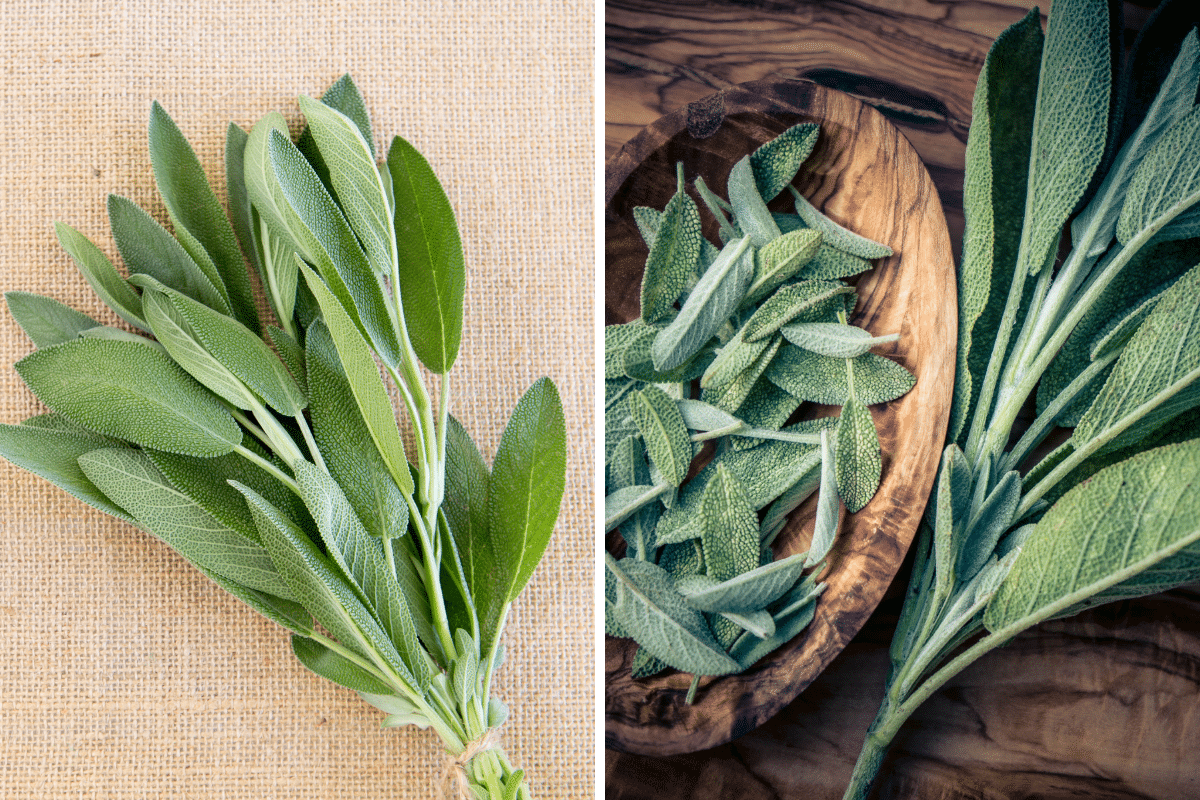
Fresh sage has dense and fuzzy leaves so that it can endure long cooking times. Dried sage is also widely available in grocery stores, but note that it has a bolder taste.
You can use sage in most recipes that call for savory to season meat, especially poultry and lamb. It’s also a staple when cooking a holiday spread, like in stuffing and roasted vegetables. Sage is a perfect ingredient for roasting potatoes.
You can easily substitute savory with sage with a 1:1 ratio.
Oregano
If bold aromatic herb and rich flavor are your requirements for a good substitute for dried savory, then oregano can deliver both qualities.
One of the advantages of oregano, when used to substitute for savory, is that it’s also a fragrant herb that adds hot and peppery flavor notes to a dish.
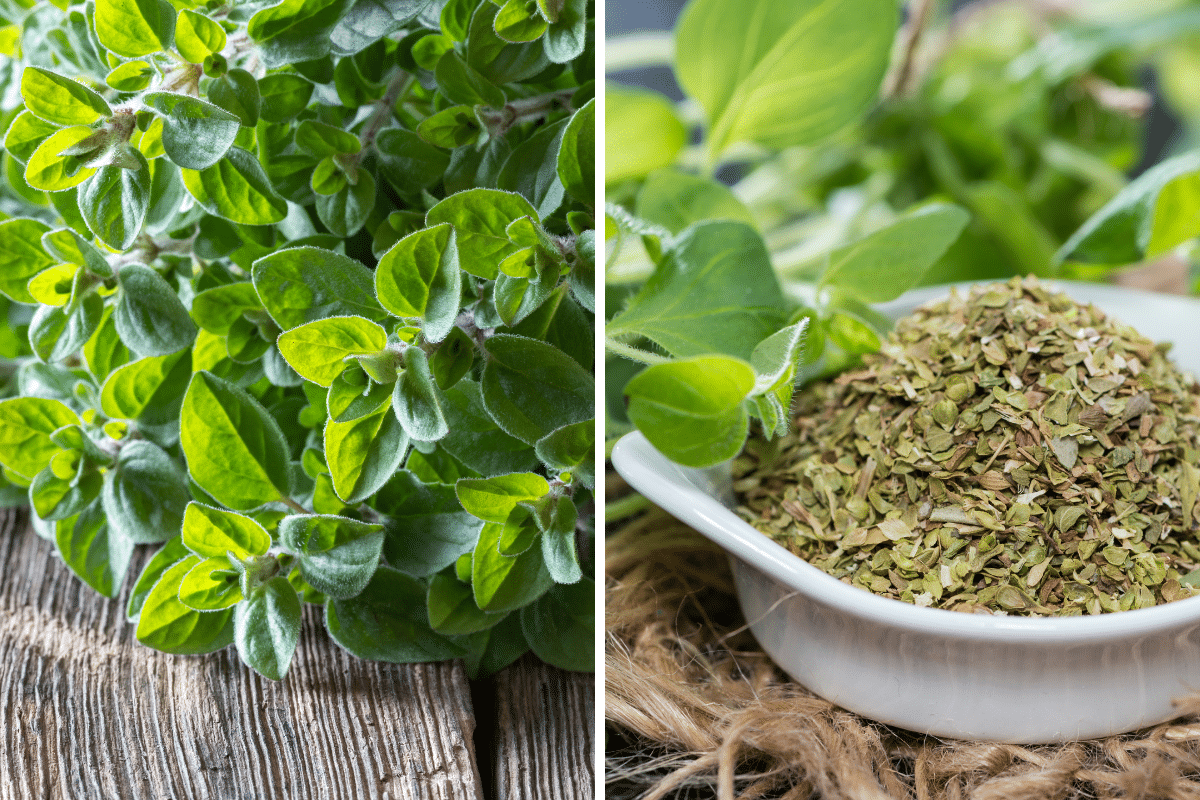
Oregano’s flavor profile makes it a perfect herb for sauces and dishes like soups, savory bread, and pastries. That’s another reason it’s part of the timeless combination of Italian seasoning.
If the recipe calls for 1 teaspoon of savory, you can replace it with 1 teaspoon of oregano.
However, dried oregano tends to have a stronger aroma than most herbs. So, it’s okay to start with a smaller amount when substituting with dried oregano.
It’s also one of the easiest savory alternatives to find in markets and grocery stores.
Marjoram
Here’s another culinary herb that belongs to the mint family. Marjoram has some similarities to oregano, although it’s generally milder.
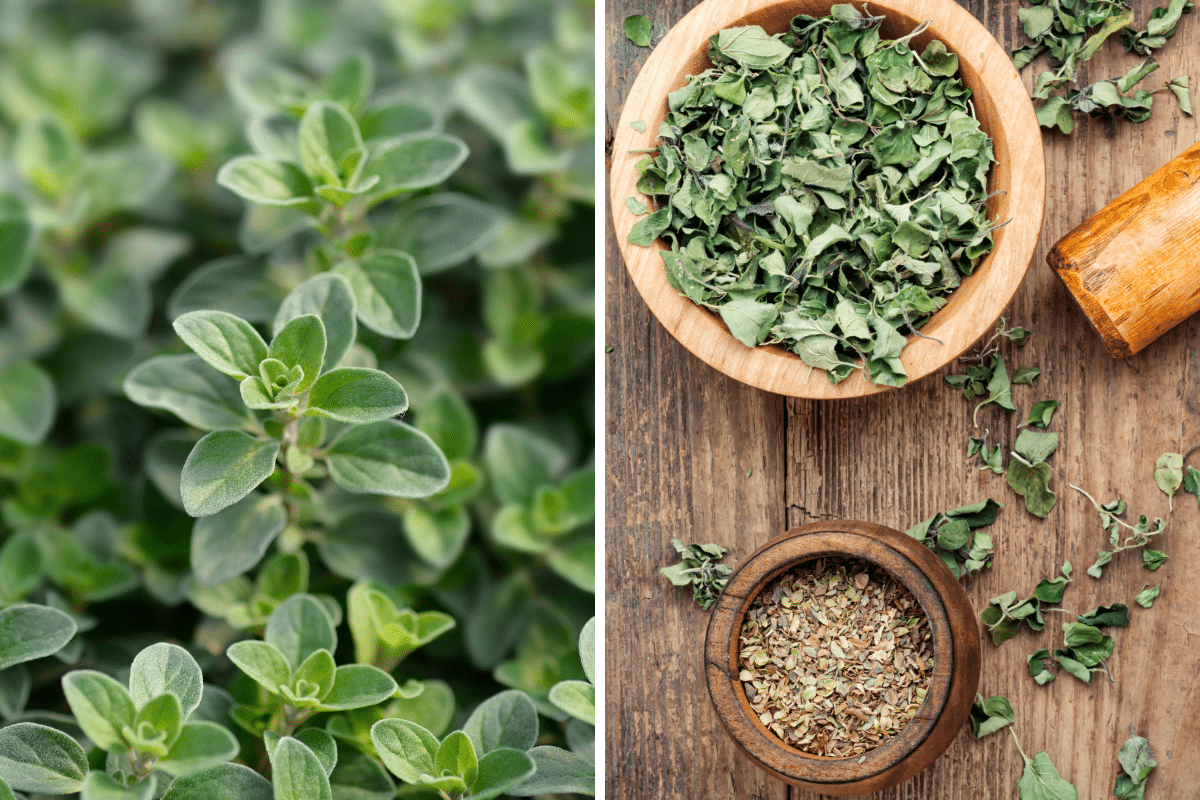
This herb has pine-like and sweet flavors. Fresh marjoram has tender leaves, so it’s best to add it toward the end of the cooking to avoid it becoming too bitter.
Marjoram has added citrusy undertones, making it great for creamy sauces and salad dressings. It also goes well with savory herb recipes for meat stews, soups, and marinades for poultry and fish.
Because it’s a more delicate herb, start with a 1:1 ratio when replacing savory with marjoram. But don’t forget to taste as you cook and see if you need to add more herbs.
Herbes de Provence
Spice mixture herbes de Provence, which translates to herbs of Provence, is a blend used as an all-purpose seasoning in French cuisine.
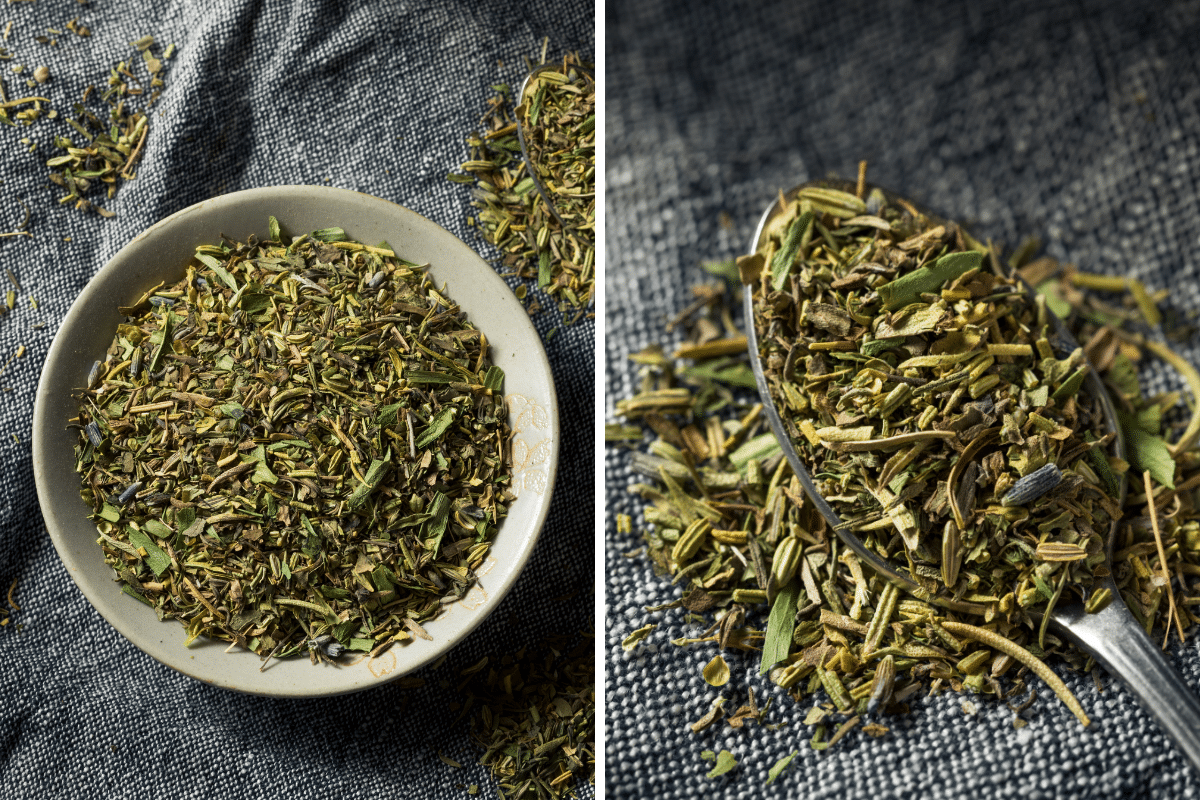
Aside from savory, herbes de Provence also includes oregano, marjoram, thyme, tarragon, rosemary, and basil.
So expect a harmonious blend of herbs that will bring the flavor of your dish to another level.
Herbes de Provence can replace savory in a 1:1 ratio. But if the recipe calls for other herbs and spices, you may want to use it sparingly and adjust the amount to achieve your preferred flavor.
It’s best used in marinating grilled meats and fish, but herbes de Provence also goes well in stews and soups.
Basil
While basil is also related to savory herbs, it’s a bit of a departure in flavor.
Basil has a refreshing flavor profile with notable sweetness. It can add a peppery taste, but it’s much more subdued than what you can get from summer savory.
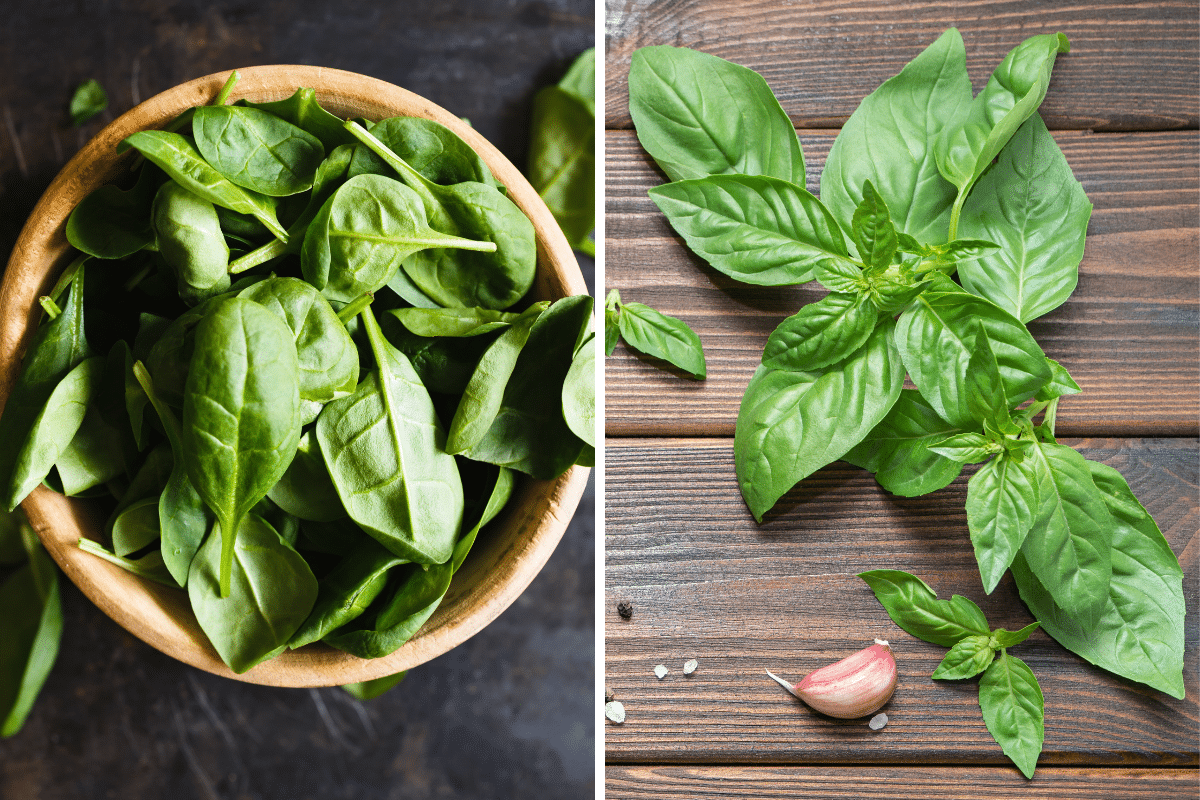
While fresh basil leaves are more delicate, they can withstand hours of cooking time. So it’s no surprise that basil is a staple herb in long-cooking recipes, such as sauces for pasta and pizza.
You can also use basil in marinades for grilling meats. Basil’s fresh taste also goes well in salad dressings and soups. It’s not overpowering, so basil is commonly used as a garnish.
A 1:1 ratio in substituting savory with basil is a good place to start.
How to Choose the Best Summer and Winter Savory Substitutes
Any good substitute for savory herbs can be a decent replacement for both summer savory and winter savory. That said, a dish might require specific flavors and aroma, so take some time and follow these tips when deciding what alternative to use.
- Visualize the flavor of the dish. Is the peppery taste important in the recipe? Then alternatives like thyme, oregano, and basil may be the best options. Marjoram might be the way to go if the dish needs refreshing and earthy flavor notes.
- Determine if the recipe needs fresh or dried herbs. It’s often recommended to use fresh herbs because the taste is more delicate. The specific flavor notes of herbs are also more recognizable without overpowering.
However, there are several advantages to using dried herbs. Generally, dried herbs have more concentrated flavors, and they’re much easier to find.
- Understand the intensity of the substitute ingredient. This requires knowing if a savory alternative has a stronger taste and aroma. When you’re not sure, it’s best to start with a smaller amount than what the recipe calls for of the original ingredient.
- Consider mixing different herbs. Each herb and spice has specific flavors, so no substitute can exactly replicate the taste of savory. But you can try to combine herbs to add peppery, earthy, and minty notes to your recipe.
FAQ
Despite its name, savory seasoning is a mixture of herbs and spices that doesn’t contain summer savory or winter savory. Ingredients vary depending on the brand of savory spice seasoning blend.
However, the common herbs and spices included are oregano, parsley, basil, thyme, cinnamon, garlic powder, paprika, ground ginger, salt, and ground black pepper.
Both variants of fresh savory can be more difficult to find in stores than other herbs and spices. If you need savory for upcoming dinner plans, looking for it in online stores can make it easier. But if you need it immediately, luckily, there are easy-to-find substitutes that you can use.
Yes, savory is surprisingly easy to grow, even in an indoor herb garden. It will thrive if it can get full sun for a few hours in a day, and it’s best planted in rich, well-draining soil.
Replace Savory With the Most Suitable Herbs for Your Recipe
One of the best things about cooking is you have room to experiment and get creative to adjust recipes according to your family’s preferences.
So whenever you stumble upon a recipe with an ingredient you don’t usually use, like savory, you can still push through with your dinner plans. You just have to know a few good alternatives for savory, and you’re good to go!

